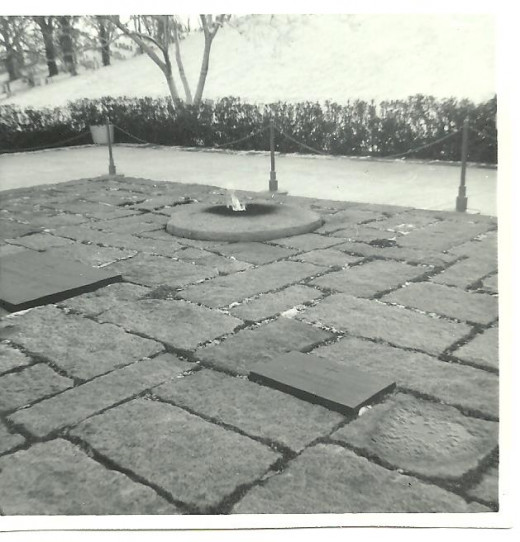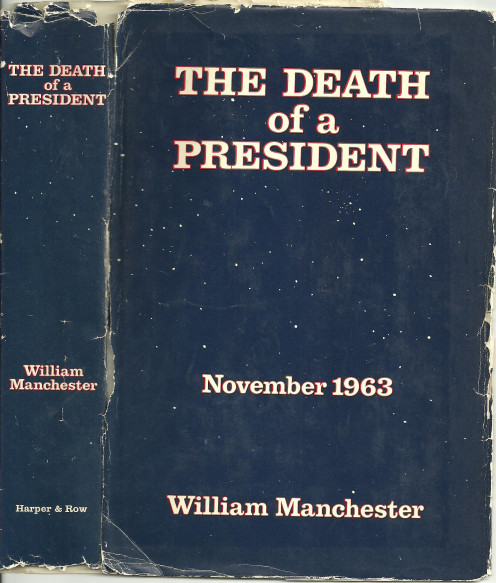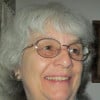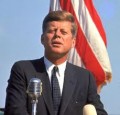William Manchester Book Details JFK Death

Death of A President
On this day in 1963, November 25, America laid its President John F. Kennedy to his final rest. Over the years, his gravesite with its eternal flame has become the resting place of many more of his family members.
But on November 25, 1963, the world was at his side as he was lowered into the ground, a victim of an assassin's bullet and a scene of sad chaos in Dallas, Texas. In those three days in Washington, D.C., America's capital embodied a most somber processional tribute that still lives in the hearts and minds of many citizens of the United States and of the world.
President Kennedy was waving happily to crowds of Dallas residents on November 22, 1963, as his motorcade traveled the sharp curve onto Elm Street, left around Dealey Plaza, in front of the Texas School Book Depository building. The tall, gray, multi-windowed building cuddled a sniper's nest on the sixth floor.
The President was fatally wounded and whisked off to Parkland Hospital, minutes away, where he was pronounced dead at 1 p.m.
Enter author William Manchester...
Dealey Plaza, Dallas, Texas
The Presidential motorcade swept west under Stemmons Freeway toward Parkland Hospital after the shooting.
William Manchester's Interviews
On February 5, 1964, Manchester, who already had written of President Kennedy, the 35th president of the United States, in his previous book, "Portrait of a President", was invited by the President's widow, Jacqueline, to explore the events of November,1963, in book form.
Mrs. Kennedy and Manchester agreed that the book would be Manchester's, no one else's.
And Manchester began his massive research. He ended with "18 volumes of transcribed interviews and 27 portfolios of documents", the material from which he wrote his book, according to his own report in his Foreward of "The Death of a President November 1963". Ending nearly three years of research, Manchester published his book in 1967 with Harper & Row Publishers, New York, Evanston, and London. It features exact timelines and maps of events described in text. It is a definitive epic of some of the worst hours and days in United States history.
Manchester's research extended to interviews with President Lyndon B. Johnson, who held the office of Vice-President previous to the shooting, and members of the Secret Service detachment who were on duty that day in Dallas, to persons on the street that witnessed the assassination, to Abraham Zapruder, who infamously home-filmed the event in innocent enthusiasm. He spoke with doctors and nurses and other personnel at Parkland Hospital. He tracked down the media reporters who had covered the President's trip to Dallas.
The only person who refused Manchester's invitation to be interviewed was the widow of Lee Harvey Oswald, the alleged presidential assassin.
No one was able to speak with Oswald in Dallas other than police officers and gathered reporters following his arrest shortly after the fatal shooting of the President. By Sunday afternoon, two days later, Oswald was dead, also the ironic victim of an assassin. Dallas nightclub owner Jack Ruby escaped everyone's notice as he boldly approached Oswald in the garage of the Dallas jail where a nationally televised relocation of Oswald was going to take place. Ruby mortally wounded Oswald and was afterward thrown to the concrete floor and relieved of his weapon. In a later trial, Ruby was convicted of murdering Oswald, but the proceedings shed very little light on the assassination of President Kennedy.
Lone Gunman, Or Conspiracy?
Who do you think killed President John F. Kennedy?
William Manchester's Research
Manchester left no crevice unexplored in his quest to write a clear testimony of what happened in Dallas, Texas, on November 22, 1963, when assassin's bullets cut down President Kennedy.
The writer even "crawled over the roof of the Texas School Book Depository and sat in Oswald's sixth floor perch," he reports in his book's Foreward.
What did Jacqueline Kennedy remember of the shooting and subsequent race to the hospital to save her husband? Manchester tells it all.
Why did the Secret Service agents attached to the motorcade encounter such confusion after shots were recognized as having been fired? Manchester reveals the protocol in such a situation.
The Forth Worth and Houston Presidential hotel suites, the Houston Coliseum, the Forth Worth parking lot and the ballroom, and every inch of the President's path trod previous to the shooting were combed and scrutinized by Manchester.
He talked with the President's taxi driver, looked at the notorious Grassy Knoll, retraced Oswald's steps before and following the assassination, including the exact spot where Oswald shot and killed Officer J.D. Tippit after having returned to his rooming house and leaving it again.
Why couldn't the FBI arrest an alleged Presidential killer? What was the route of the state funeral for JFK in Washington? Who attended? Who represented world governments? Why did a bullet that entered the bodies of two men show such startling lack of damage?
Manchester has all the answers in his stirring, novel-like account of that fateful day in Dallas and the next several days in Washington, November, 1963, as a nation was forced to say goodbye to a beloved leader.









